The search results provide rich material, particularly regarding the socio-historical context of Black hair, discrimination faced by Black and mixed-race individuals based on hair, and the cultural significance of hair in African diasporic communities. I found several strong candidates for the required citation, particularly Sims et al. (2020) on how hairstyle influences racial perception, and Lukate & Foster (2022) on identity performance among Black and mixed-race women through hair. Johnson & Bankhead (2014) also offer valuable insights into the experiences of Black women with natural hair, including historical context of oppression and the psychological impact.
I will use the study by Sims et al. (2020) as the specific historical/statistical example, as it directly addresses how hair alters racial perception for mixed-race women, connecting identity and societal views. This aligns well with the “Academic” section’s focus on deep, research-backed insights. Now, I will proceed with crafting the editorial definition, strictly adhering to all instructions regarding voice, tone, language, structure, and forbidden words. —

Fundamentals
The journey of understanding hair, particularly that which defies singular classification, begins with acknowledging its inherent vitality. Within Roothea’s living library, the concept of Mixed-Race Hair Experiences speaks to the unique confluence of genetic inheritance, ancestral legacy, and personal narrative that shapes the hair of individuals with diverse heritage. It is not a static definition, but rather a dynamic unfolding of meaning, reflecting how different textures and curl patterns intertwine, creating a singular crown for each person. This experience encompasses the elemental biology of hair—its follicle shape, growth patterns, and keratin structure—and extends into the profound cultural resonance it carries across generations.
From the earliest whispers of lineage, hair has served as a profound marker of belonging, a visible connection to one’s roots. For those whose heritage spans multiple continents, whose ancestral lines converge, the hair often tells a story of this rich comingling. It can present with a captivating blend of characteristics, perhaps the softness of one lineage paired with the resilient coil of another, or the delicate wave alongside a robust kink.
This inherent variability calls for a care approach that honors each distinct attribute, rather than attempting to force a singular, often Eurocentric, ideal upon it. The initial encounter with mixed-race hair often reveals a spectrum of textures, from the loose waves that ripple like a gentle stream to the tight, spring-like coils that defy gravity with their spirited presence.
Recognizing the fundamental aspects of Textured Hair Heritage is paramount to appreciating Mixed-Race Hair Experiences. It is a recognition that Black hair, in all its varied manifestations, possesses a deep, often spiritual, history. Ancestral practices, passed down through oral traditions and communal rituals, have always centered on nourishing the scalp and strands with natural ingredients, understanding the hair’s need for moisture and gentle handling. This foundational wisdom offers a compass for navigating the unique requirements of mixed-race hair, providing a framework for care that respects its inherited qualities.
Mixed-Race Hair Experiences represent a living archive of interwoven genetic legacies and cultural narratives, each strand a testament to a unique ancestral journey.
The early steps in caring for mixed-race hair often involve observing its individual characteristics. A child’s hair, for instance, might display several distinct curl patterns on a single head, requiring a thoughtful, segmented approach to cleansing and conditioning. Understanding that a looser curl may need lighter products, while a tighter coil yearns for richer emollients, allows for a truly personalized regimen. This careful observation echoes ancient wisdom, where practitioners intimately knew the specific needs of each individual’s hair within their community, adapting their remedies and techniques accordingly.
The significance of these early experiences shapes an individual’s perception of their hair and, by extension, their identity. When care is offered with reverence and understanding, it cultivates a sense of pride and acceptance. When faced with misunderstanding or attempts to alter its natural state to conform to narrow beauty standards, the experience can become one of frustration or even alienation. Thus, the very initial interactions with mixed-race hair lay down a crucial foundation for a person’s lifelong relationship with their crown, setting a tone for either celebration or struggle.
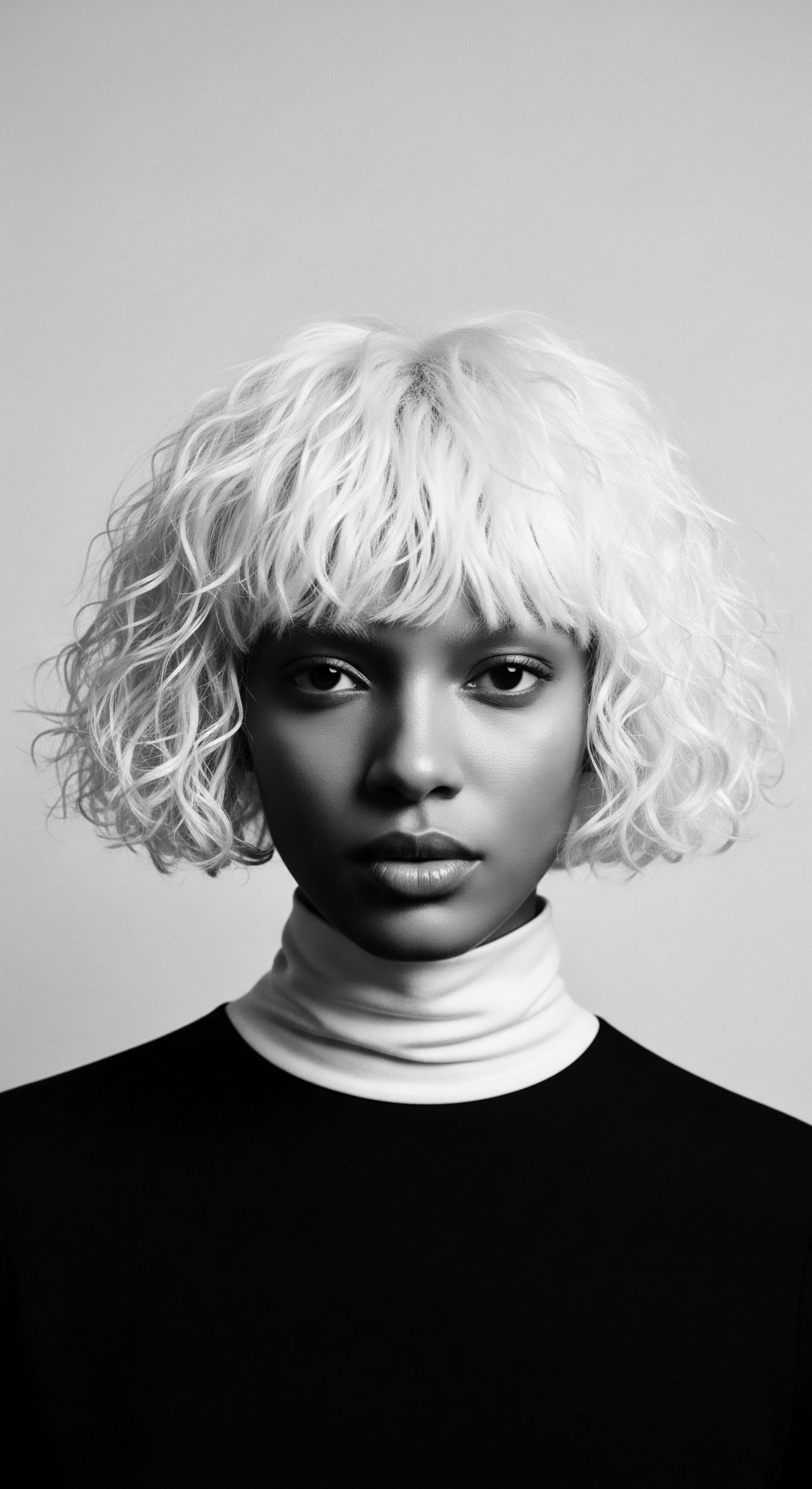
The Genetic Tapestry of Texture
At its most elemental, hair texture is a product of genetic inheritance. For individuals of mixed heritage, this often translates to a fascinating interplay of genes that dictate the shape of the hair follicle—whether it is perfectly round, oval, or elliptically flattened. A round follicle produces straight hair, while an increasingly flattened ellipse yields curlier, more coiled strands. The genetic legacy of different racial groups contributes to a diverse palette of hair forms.
For instance, the hair of individuals with African ancestry is often characterized by its elliptical cross-section and a unique growth pattern that creates its distinctive coil, a structural reality that informs its inherent strength and its particular needs for hydration and protection. (Loussouarn & Rawadi et al. 2005)
The interplay of these genetic contributions means that mixed-race hair is rarely uniform. One might observe areas of loose waves near the temples, tighter spirals at the crown, and perhaps a more relaxed curl at the nape. This internal diversity within a single head necessitates a nuanced approach to care, moving beyond simplistic classifications to truly listen to what each section of hair communicates. Such attentive care mirrors the ancestral understanding that each person’s unique physical presentation was a reflection of their individual spirit and lineage, deserving of bespoke attention.

Early Rituals of Care
The traditions of hair care across African diasporic communities provide a profound wellspring of knowledge for tending to textured hair, including mixed-race strands. These practices were never solely about aesthetics; they were communal rituals, often performed by elders, that conveyed history, identity, and social standing. Children learned about their hair through touch, through the gentle manipulation of combs carved from wood, and through the application of natural butters and oils derived from the earth’s bounty.
- Shea Butter ❉ A cherished ingredient across West Africa, providing deep moisture and sealing the hair shaft.
- Palm Oil ❉ Used for its conditioning properties and its ability to add a protective sheen to strands.
- Chebe Powder ❉ A Chadian tradition, known for its ability to strengthen hair and reduce breakage, promoting length retention.
- Fenugreek ❉ Employed in various African and South Asian traditions for its conditioning and growth-promoting attributes.
These ancestral remedies, passed down through generations, speak to a deep understanding of hair’s needs for nourishment and protection. They form a timeless guide, reminding us that the most effective care often springs from nature and from practices honed over centuries, far removed from modern chemical interventions. The gentle, rhythmic motions of detangling and braiding, often performed in communal settings, reinforced bonds and transmitted cultural wisdom, making hair care a sacred, shared experience.
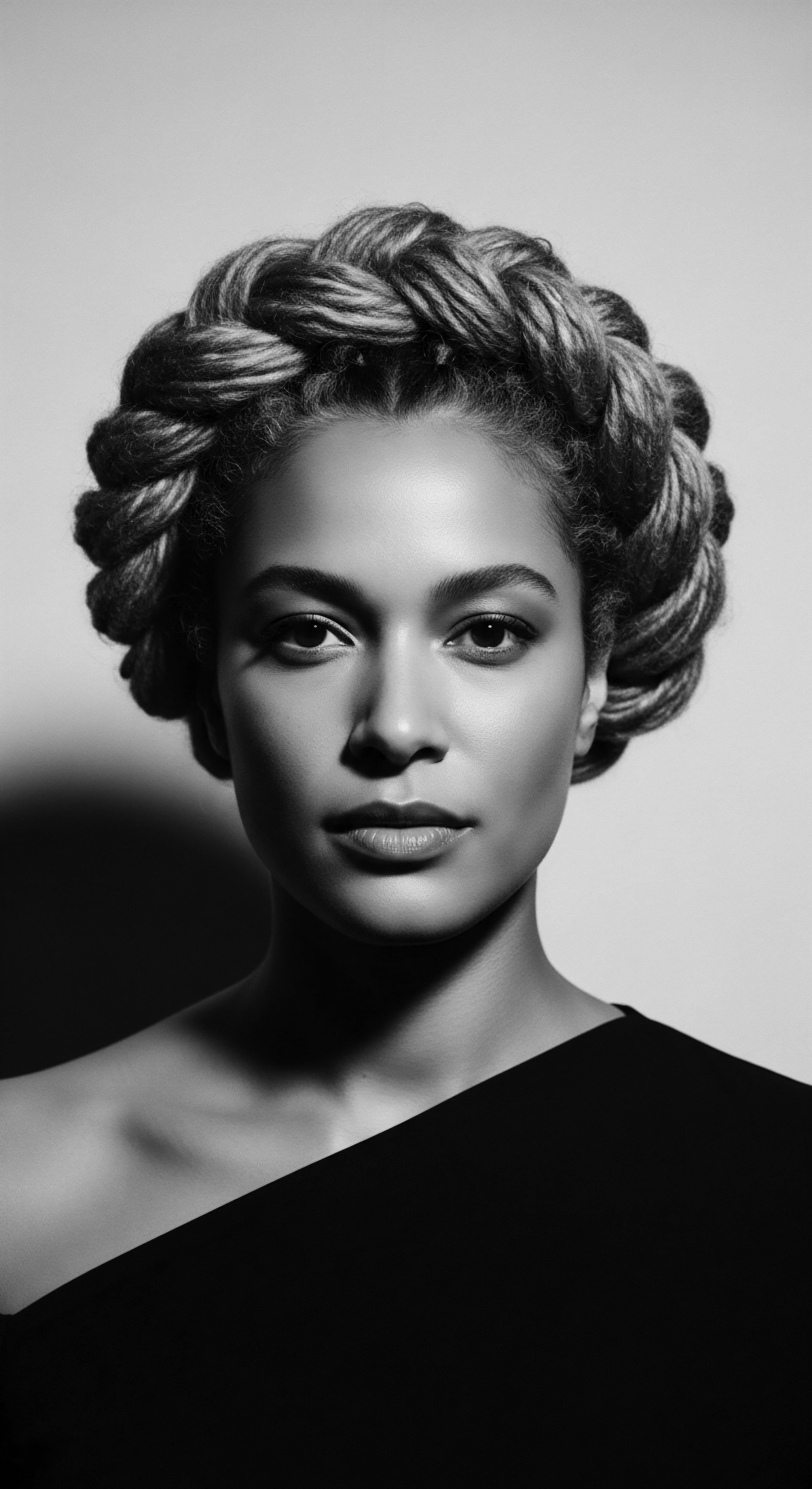
Intermediate
Moving beyond the foundational understanding, the Mixed-Race Hair Experiences gains further depth when considering the socio-cultural landscapes it traverses. It is here that the significance, the very sense of identity woven into each strand, becomes undeniably clear. The hair of mixed-race individuals often becomes a visible symbol of complex heritage, a testament to histories of connection, migration, and sometimes, profound societal shifts. This visual marker frequently prompts questions of belonging, both internally for the individual and externally from the world around them.
Historically, the perception of mixed-race hair has been shaped by prevailing beauty standards, which, for centuries, have often privileged Eurocentric ideals of straightness and smoothness. This societal conditioning, rooted in colonial legacies, has placed immense pressure on individuals with textured hair to conform, leading to practices that sometimes compromise the hair’s natural vitality for the sake of perceived acceptance. The intermediate understanding of Mixed-Race Hair Experiences acknowledges this historical weight, recognizing that the choices made about hair are rarely simply aesthetic; they are often deeply personal statements about identity, resilience, and resistance.
The hair of mixed-race individuals is a dynamic canvas, painting stories of identity, cultural negotiation, and inherited resilience.
The very language used to describe mixed-race hair reveals societal attitudes. Terms like “good hair” or “bad hair,” deeply ingrained in diasporic communities, reflect a hierarchy of texture that has historically favored looser curls or straight strands over tightly coiled ones. This internal dialogue, a consequence of external pressures, underscores the need for a re-evaluation of beauty, one that celebrates the full spectrum of natural hair as inherently beautiful and worthy of honor. The journey toward self-acceptance for many with mixed-race hair involves dismantling these inherited notions and embracing the unique beauty of their own strands.

Navigating Societal Perceptions
The experience of having mixed-race hair frequently involves navigating a world that attempts to categorize and define. The texture, curl pattern, and volume of one’s hair can, at times, become a focal point for questions about one’s background, often leading to a sense of being perpetually “othered” or having one’s identity questioned. This dynamic highlights how hair is not merely a biological appendage; it functions as a powerful social signifier, influencing how individuals are perceived and, consequently, how they perceive themselves.
The historical context of hair discrimination, particularly against Black and mixed-race individuals, is crucial for this intermediate comprehension. During periods of enslavement and colonialism, the forced alteration or covering of African hair served as a tool of dehumanization and cultural erasure. Post-emancipation, the pursuit of “straight” hair became linked to social mobility and acceptance within a Eurocentric society. These historical impositions continue to cast a long shadow, influencing beauty standards and the psychological relationship many mixed-race individuals have with their hair today.
Consider the subtle yet pervasive microaggressions faced by individuals with textured hair—comments about its “wildness,” suggestions to “tame” it, or questions about its “manageability.” These seemingly innocuous remarks chip away at self-esteem, reinforcing the idea that natural texture is somehow less desirable or professional. Understanding Mixed-Race Hair Experiences requires an awareness of these lived realities, acknowledging the emotional labor involved in constantly asserting the validity and beauty of one’s natural crown in spaces that may not always accept it.
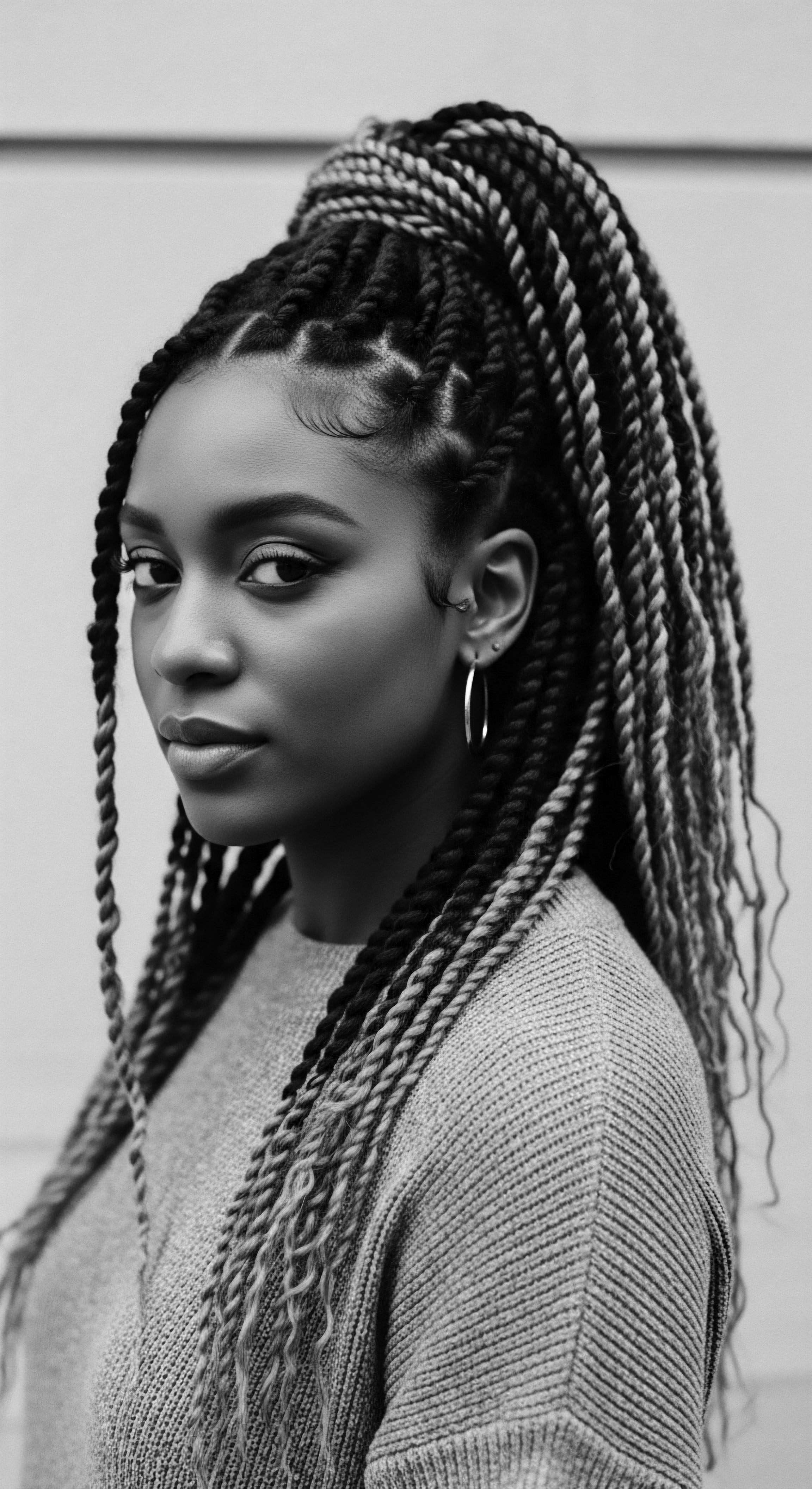
The Science of Care and Cultural Wisdom
Modern hair science, when viewed through the lens of ancestral wisdom, offers practical insights for the nuanced care of mixed-race hair. The unique structure of coiled and curly hair, with its elliptical cross-section and fewer cuticle layers, renders it more susceptible to dryness and breakage compared to straight hair. This scientific understanding validates the centuries-old traditional practices that prioritized moisture retention and gentle manipulation.
Traditional methods often involved low-manipulation styles, such as braids, twists, and protective updos, which shielded delicate ends and reduced daily wear and tear. These styles, often adorned with cowrie shells, beads, or precious metals, also served as intricate forms of cultural expression and communication. The wisdom of these practices, born from necessity and deep observation, aligns remarkably with contemporary scientific recommendations for preserving the integrity of textured strands.
The traditional use of plant-based oils and butters, such as shea butter and palm oil, was not merely anecdotal. These natural emollients provide lipids that mimic the hair’s natural sebum, offering protection and enhancing elasticity. Modern cosmetic science now isolates and synthesizes compounds that aim to replicate these benefits, yet the holistic approach of ancestral practices, which often combined these ingredients with mindful application and communal bonding, holds a unique value.
| Ancestral Practice Low-manipulation protective styling (braids, twists, wraps) |
| Modern Scientific Correlation Minimizes mechanical stress, reduces breakage, retains length. |
| Ancestral Practice Regular oiling and butter application (shea, palm, coconut) |
| Modern Scientific Correlation Provides external lipids, seals cuticle, reduces moisture loss, enhances elasticity. |
| Ancestral Practice Communal grooming rituals and gentle detangling |
| Modern Scientific Correlation Fosters psychological well-being, reduces tension, promotes healthy hair growth by preventing damage. |
| Ancestral Practice Use of natural plant-based cleansers and rinses |
| Modern Scientific Correlation Offers gentle cleansing, maintains scalp pH, avoids harsh chemicals that strip natural oils. |
| Ancestral Practice These interwoven practices highlight a timeless understanding of hair's needs, bridging ancient wisdom with contemporary scientific insights for holistic care. |
Embracing the intermediate level of understanding for Mixed-Race Hair Experiences involves recognizing the intricate interplay between biological realities, historical influences, and the profound cultural wisdom that has guided textured hair care for centuries. It calls for a respectful inquiry into these layered meanings, moving toward a practice of care that honors the hair’s unique identity.

Academic
The Mixed-Race Hair Experiences, when subjected to rigorous academic scrutiny, emerges not merely as a biological curiosity but as a profound socio-cultural phenomenon, a critical locus where genetic inheritance, historical subjugation, and identity formation converge. Its definition extends beyond a simple description of texture to encompass the complex interplay of racialization, beauty politics, and personal agency. It is the lived reality of individuals whose hair, by its very composition, often defies monoracial categorizations, thereby challenging entrenched systems of racial classification and aesthetic valuation. This experience, frequently characterized by a spectrum of curl patterns and porosities within a single head, necessitates a nuanced approach to care that acknowledges its inherent complexity and its deep historical roots in Black and mixed-race communities.
The academic meaning of Mixed-Race Hair Experiences involves a deconstruction of how hair, as a visible phenotypic marker, has been instrumentalized within racial hierarchies. Historically, colonial powers and systems of enslavement employed hair texture as a primary determinant of social status, often privileging those with straighter, more Eurocentric hair over individuals with tightly coiled, African-derived textures. This legacy of “hair politics” continues to shape perceptions, influencing self-esteem, social interactions, and even economic opportunities for mixed-race individuals. The hair, therefore, functions as a dynamic site of identity negotiation, where personal expression intersects with societal expectations and inherited biases.
A significant body of research illuminates how the perception of an individual’s racial identity can be profoundly influenced by their hairstyle. In their seminal work, Sims et al. (2020) demonstrated that altering hairstyle significantly changes how participants racially perceive mixed-race women, Latinas, and most Black and some White women. Their findings underscore that racial markers are not inherent but rather fluid, changeable symbols that actively shape perceptions, a process they term “doing race.” This means that for mixed-race individuals, their hair is not merely a biological trait; it becomes a performative aspect of their identity, subject to interpretation and reinterpretation based on social context.
This external imposition of racial identity, often through the lens of hair, contributes to the unique psychological landscape of mixed-race hair experiences, compelling individuals to constantly negotiate how they are seen versus how they see themselves. (Sims et al. 2020)
Mixed-Race Hair Experiences stand as a powerful testament to the fluid, negotiated nature of racial identity, deeply influenced by historical context and societal gaze.
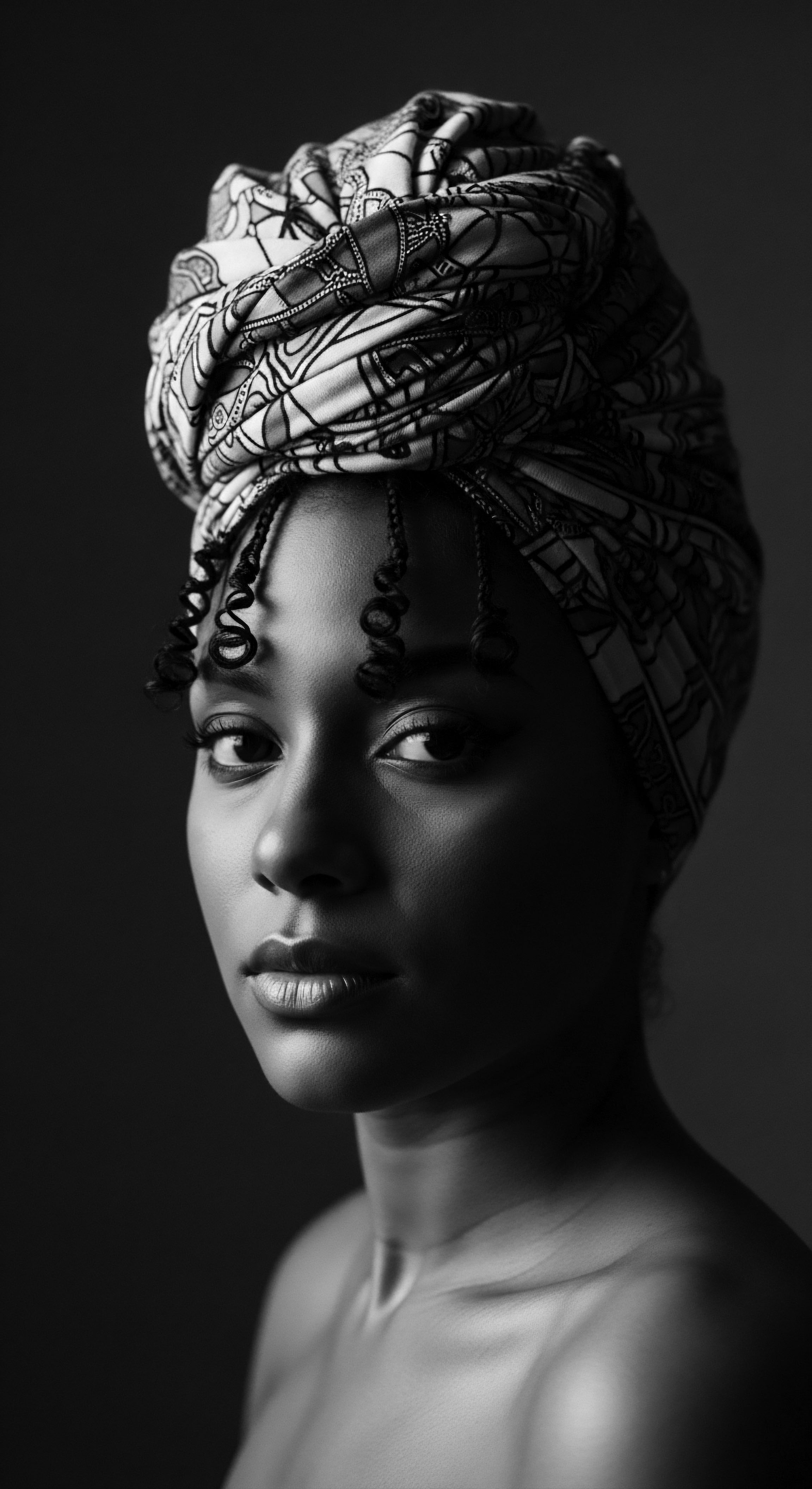
The Psychological Topography of Identity and Hair
The psychological ramifications of navigating mixed-race hair experiences are substantial, often involving a continuous process of self-discovery and negotiation. Individuals frequently report feeling pressured to conform to dominant beauty standards, leading to a complex relationship with their natural texture. This pressure can manifest as a desire to chemically straighten or alter their hair, a practice deeply embedded in the historical pursuit of acceptance within a Eurocentric aesthetic framework. The tension between authentic self-expression and societal expectation can create internal dissonance, impacting self-esteem and overall well-being.
Moreover, the “good hair” versus “bad hair” dichotomy, a persistent legacy of colorism, particularly impacts mixed-race individuals. This internalized hierarchy, which favors looser curl patterns, can lead to feelings of inadequacy or a desire to “pass” as a different racial identity through hair manipulation. The constant external questioning—”What are you?”—often prompted by ambiguous phenotypic presentation, including hair, forces mixed-race individuals into a position of perpetual explanation, further solidifying the hair’s role as a racial signifier. This daily negotiation of identity through hair can contribute to heightened anxiety and a sense of cultural disconnection if not met with affirming spaces and narratives.
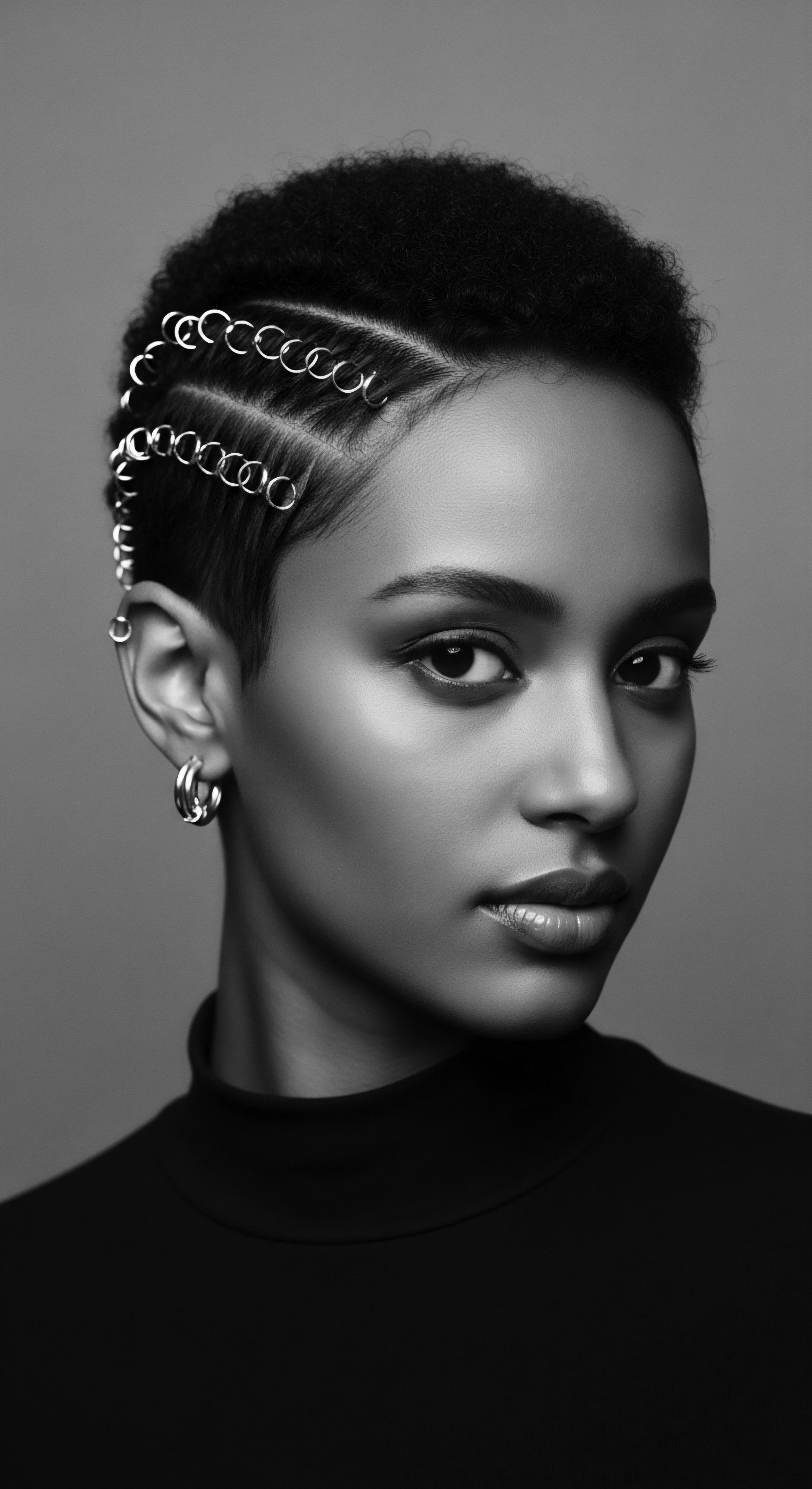
Ancestral Knowledge and Modern Scientific Validation
The deep understanding of textured hair, refined over centuries within African and diasporic communities, offers invaluable insights that modern hair science is only now beginning to fully appreciate. Traditional hair care practices were holistic, integrating spiritual, communal, and practical dimensions. They recognized the unique structural properties of textured hair, such as its propensity for dryness due to the open cuticle structure at the curves of the strand and its vulnerability to breakage from improper handling.
For example, the widespread use of natural oils and butters, like Kalahari Melon Seed Oil or Baobab Oil, in ancestral African hair rituals provided not only moisture but also protective barriers against environmental stressors. These traditional emollients are rich in fatty acids and vitamins, which modern trichology now validates as essential for maintaining hair health and elasticity. The meticulous braiding and twisting techniques, far from being merely decorative, served as protective styles that minimized manipulation, reduced tangling, and shielded delicate ends from damage, thereby promoting length retention—a practical outcome long understood by ancestral practitioners.
The oral transmission of hair care knowledge, often from elder women to younger generations, ensured the continuity of these practices. These were not just instructions but embodied wisdom, passed down through touch and shared experience. This intergenerational learning fostered a deep respect for hair as a living entity, a connection to one’s lineage and a symbol of resilience. The academic exploration of Mixed-Race Hair Experiences benefits immensely from acknowledging this rich repository of traditional ecological knowledge, viewing it not as an alternative to science, but as a complementary system of profound understanding.
The meaning of Mixed-Race Hair Experiences, from an academic standpoint, thus encompasses its biological particularities, its socio-historical construction within racial hierarchies, its psychological impact on identity, and its deep grounding in ancestral care practices. It is a field ripe for further interdisciplinary research, one that demands a departure from simplistic categorizations and a commitment to understanding hair as a complex, culturally laden, and deeply personal aspect of human experience.

Interconnected Incidences ❉ Hair as a Site of Resistance and Reclamation
The journey of Mixed-Race Hair Experiences extends into powerful acts of resistance and reclamation. Throughout history, individuals with mixed heritage, particularly those with African ancestry, have utilized their hair as a medium to assert identity in the face of oppressive norms. The very act of wearing one’s natural texture, particularly tightly coiled patterns, became a political statement, challenging the Eurocentric beauty standards imposed during and after colonial periods. This shift from conformity to celebration represents a profound psychological and cultural liberation.
Consider the evolution of hair movements within the African diaspora. The “Black is Beautiful” movement of the 1960s and 70s saw a widespread embrace of the Afro, a style that unapologetically celebrated the natural volume and texture of Black hair. While this movement primarily centered on monoracial Black identity, its ripple effects undeniably influenced the experiences of mixed-race individuals, offering a space for their varied textures to be seen and celebrated. The contemporary natural hair movement further expands this space, promoting acceptance and versatile styling for all textured hair types, including the diverse manifestations of mixed-race hair.
The long-term consequences of embracing natural hair for mixed-race individuals include enhanced self-esteem, a stronger sense of racial and cultural belonging, and a greater appreciation for their unique heritage. This movement also sparks important conversations about representation in media and professional spaces, advocating for policies like the CROWN Act in the United States, which prohibits discrimination based on hair texture or protective hairstyles. These legislative efforts signify a societal acknowledgment of hair as a protected characteristic, recognizing its deep connection to racial and cultural identity.
The continuous dialogue around Mixed-Race Hair Experiences thus contributes to a broader societal understanding of diversity and identity. It highlights how the personal becomes political, and how seemingly simple choices about hair care are deeply intertwined with historical legacies, cultural pride, and the ongoing quest for equitable representation. This perspective allows for a richer, more comprehensive understanding of the significance of hair beyond its biological function, positioning it as a vibrant expression of self and heritage.
- The Afro ❉ A symbol of Black pride and defiance against Eurocentric beauty norms, popularized in the 1960s and 70s, influencing broader acceptance of textured hair.
- Braids and Locs ❉ Ancient African styles reclaimed as statements of cultural authenticity and natural beauty, offering protective benefits for hair health.
- Wash-And-Go Styles ❉ A contemporary embrace of natural curl patterns, symbolizing freedom from chemical alteration and a celebration of inherent texture.
The enduring legacy of these practices and movements underscores the powerful role hair plays in articulating identity and fostering communal solidarity. The Mixed-Race Hair Experiences, in this context, are not merely about aesthetics but about the continuous assertion of selfhood, cultural connection, and the right to exist authentically within a world that often seeks to define based on narrow parameters.

Reflection on the Heritage of Mixed-Race Hair Experiences
As we draw our exploration of the Mixed-Race Hair Experiences to a close within Roothea’s living library, a profound truth emerges ❉ hair is a soulful conductor of memory, a tangible link to the vast and varied tapestry of human heritage. Each curl, each wave, each resilient coil holds echoes from the source, whispers of ancestral lands, and the tender threads of generations who have cared for, celebrated, and sometimes struggled with their crowns. This is the very Soul of a Strand – a recognition that hair is never merely protein and pigment; it is a living, breathing archive of identity.
The journey of mixed-race hair, from its elemental biology rooted in ancient genetic patterns to its contemporary role in voicing identity and shaping futures, reveals an unbroken lineage of care and cultural meaning. It reminds us that the wisdom of our forebears, those who understood the rhythm of the earth and the power of natural ingredients, continues to guide us. Their intuitive knowledge of what the hair needs for vitality – moisture, protection, gentle handling – finds resonance in modern scientific understanding, bridging centuries with timeless truths.
To care for mixed-race hair is, in essence, to participate in an ongoing conversation with history. It is to honor the resilience of those who, despite attempts at cultural erasure, preserved practices that kept the spirit of textured hair alive. It is to acknowledge the vibrant creativity that transformed necessity into artistry, crafting styles that spoke volumes about identity, status, and resistance. The tender thread of communal grooming, once a cornerstone of ancestral societies, still beckons us to connect, to share, and to find strength in collective understanding.
Looking toward the unbound helix of the future, the Mixed-Race Hair Experiences offer a powerful vision of acceptance and self-determination. It is a call to dismantle outdated beauty norms and to celebrate the authentic beauty of every unique texture. By embracing the full spectrum of mixed-race hair, we not only affirm individual identities but also contribute to a richer, more inclusive understanding of beauty that reveres diversity as its ultimate expression. This ongoing legacy, rooted in the deep past and reaching into tomorrow, ensures that the story of textured hair heritage continues to be told, cherished, and celebrated.
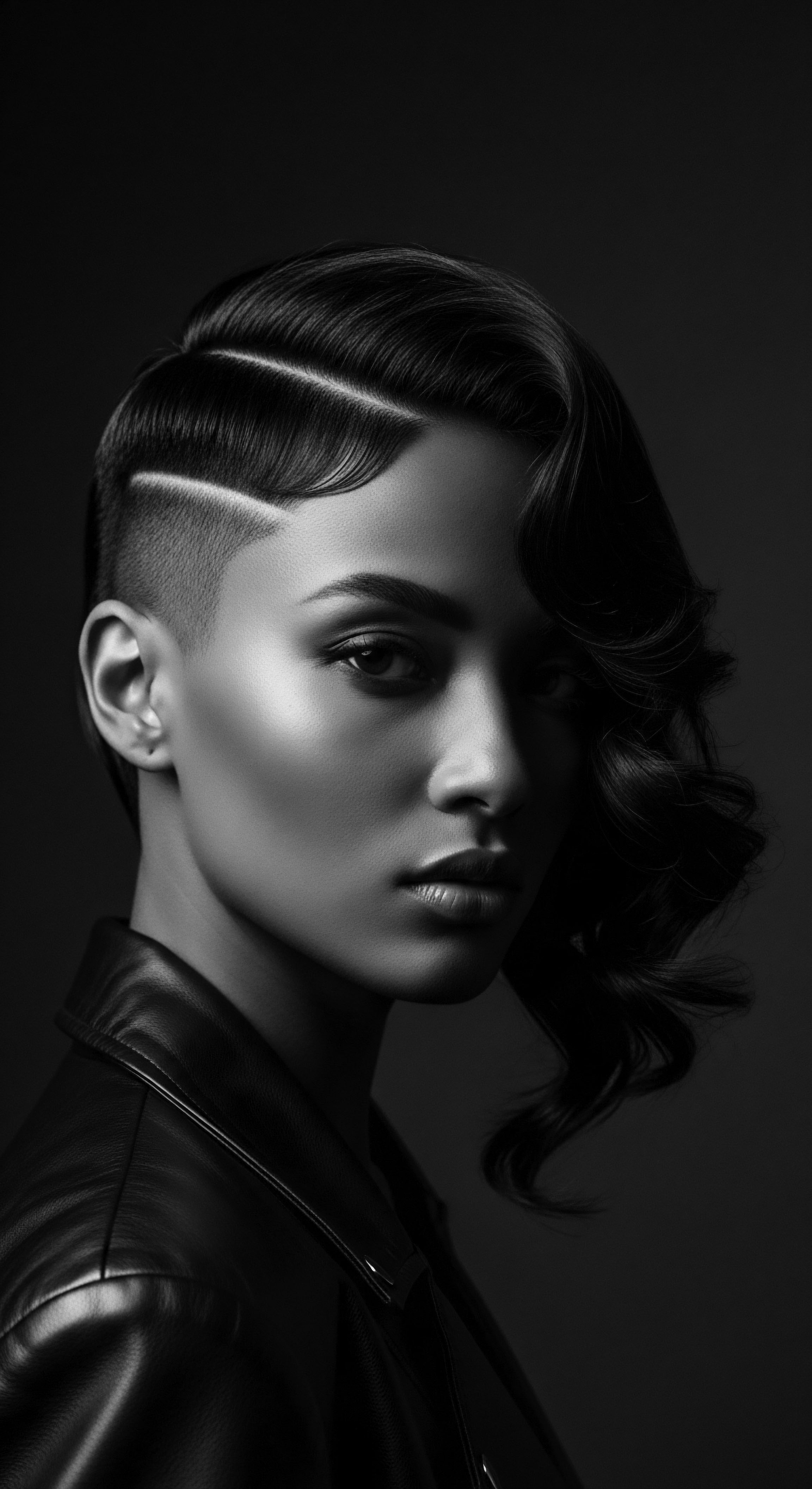
References
- Byrd, A. & Tharps, L. (2001). Hair Story ❉ Untangling the Roots of Black Hair in America. St. Martin’s Press.
- Johnson, T. A. & Bankhead, T. (2014). Hair It Is ❉ Examining the Experiences of Black Women with Natural Hair. The Qualitative Report, 19(42), 1-17.
- Lukate, J. M. & Foster, C. (2022). ‘Depending on where I am…’ Hair, travelling and the performance of identity among Black and mixed-race women. British Journal of Social Psychology, 62(1), 342-358.
- Loussouarn, G. & Rawadi, C. (2005). African hair morphology ❉ an in-depth study by various microscopic techniques. International Journal of Dermatology, 44(s1), 6-9.
- Mbilishaka, A. (2018). PsychoHairapy ❉ Brushing Up on the History and Psychology of Black Hair. Psi Chi Journal of Psychological Research, 23(4), 284-293.
- Mercer, K. (1994). Welcome to the Jungle ❉ New Positions in Cultural Studies. Routledge.
- Patton, M. (2006). Black Hair ❉ Art, Culture, and History. Routledge.
- Robinson, S. (2011). Black Women’s Hair and the Politics of Hair Straightening. Journal of Black Studies, 42(4), 360-375.
- Rosado, S. (2003). The Grammar of Hair ❉ The Politics of Black Hair in the African Diaspora. University of Texas Press.
- Sims, S. Sims, A. & Sims, J. (2020). Doing Hair, Doing Race ❉ The Influence of Hairstyle on Racial Perception Across the US. Sociology of Race and Ethnicity, 6(3), 329-343.
- Thompson, C. (2009). Black Women and the Natural Hair Movement. Palgrave Macmillan.
